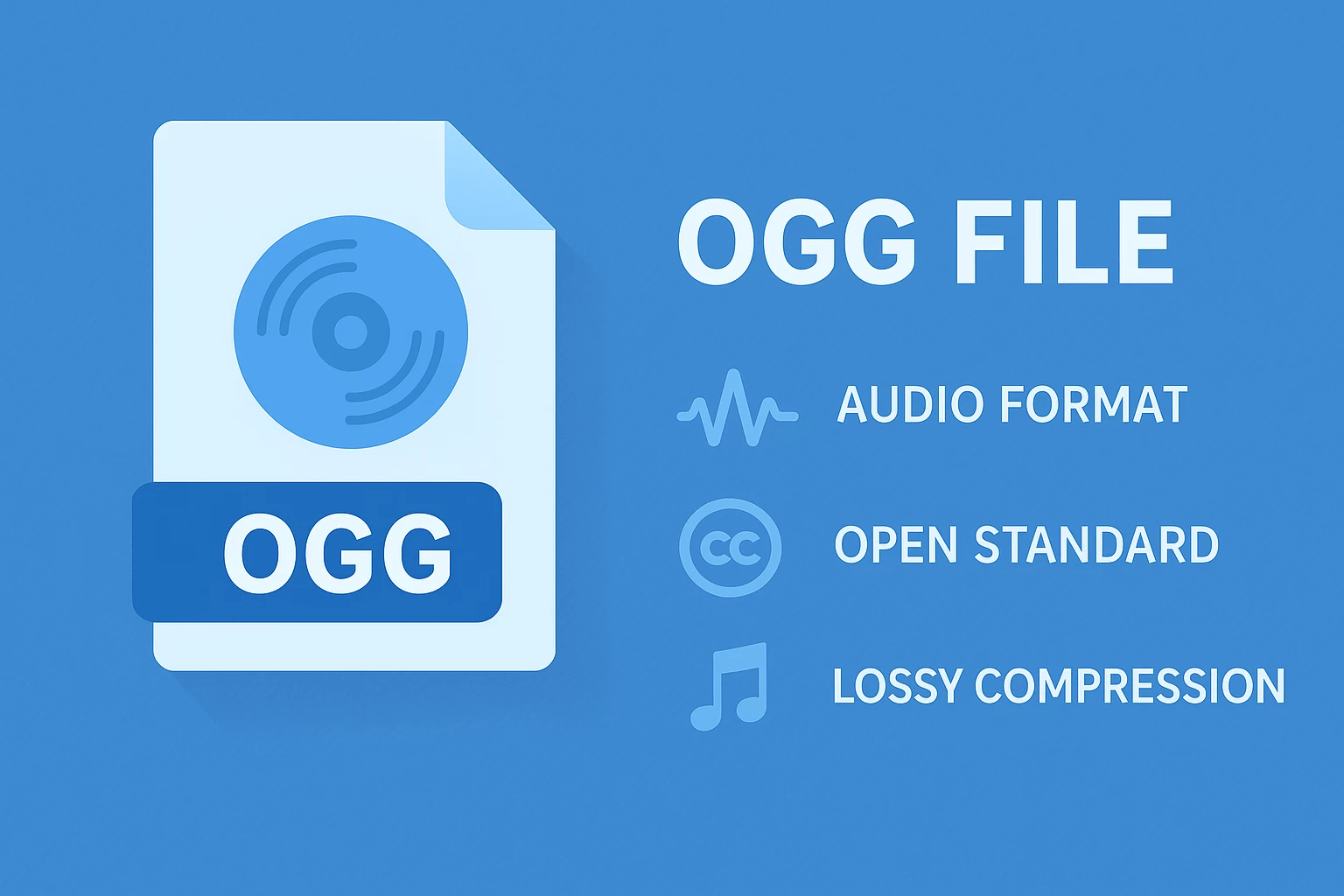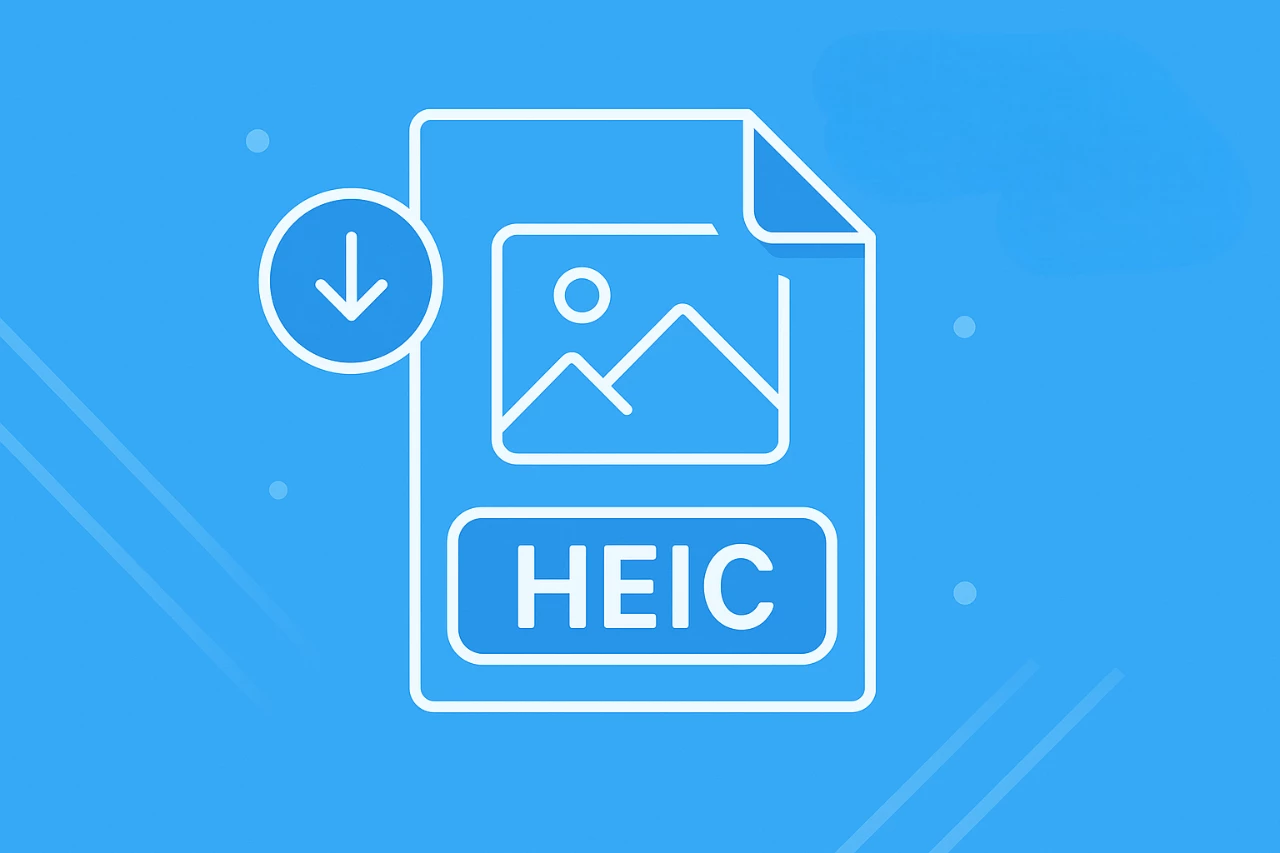
What Is a HEIC File? A-to-Z Guide for Beginners
A HEIC file is a High Efficiency Image Container, the format Apple introduced to replace JPEG on iPhones and iPads. It cuts storage size almost in half while maintaining the same level of image quality, which is why many photos today are saved in HEIC by default.
In my guide, I will explain what makes the format efficient, where it benefits everyday use, and why compatibility can still be an issue when sharing or editing.
I will also cover how to open HEIC files across different platforms, highlight safe ways to convert them, and point you toward a reliable file converter for turning HEIC into JPG or PNG.
By the end, you will have a clear understanding of whether HEIC is the right choice for you.
Why Apple Chose HEIC Over JPG?#
I remember the first time I noticed my iPhone saving photos as HEIC instead of JPG. At first, it felt confusing. I had been used to working with JPEG for years, and suddenly my files had an unfamiliar extension. It pushed me to dig deeper into why Apple made the switch.

The more I learned, the more sense it made. JPEG had been around since the 90s and could no longer keep up with the size and quality of modern images. Every new iPhone camera produced sharper, more detailed photos, but compressing them as JPEG either took up too much space or sacrificed clarity.
On the other hand, HEIC offered a smarter solution. A single HEIC photo was nearly half the size of a JPEG, yet the sharpness stayed the same.
I also noticed how well it supported features I already used every day, like Live Photos and burst shots. Instead of treating them as clunky add-ons, HEIC could hold multiple images, color depth, and even transparency inside one file.
Looking back, Apple’s move felt less like a sudden change and more like a natural step forward for anyone serious about mobile photography.
Convert HEIC to AI with MConverter
Advantages of HEIC Files#
When I first compared a HEIC photo to a JPEG, the difference was not obvious to the eye. Both looked sharp, but the file sizes told another story. The HEIC version was almost half the size of the JPEG. It was then that I realized the real advantage of the format: efficiency without sacrifice.
Over time, I also came to appreciate the other benefits. HEIC supports 16-bit color, which gives more depth when editing. It can store multiple images inside a single file, which is why Live Photos and burst shots feel seamless on an iPhone.
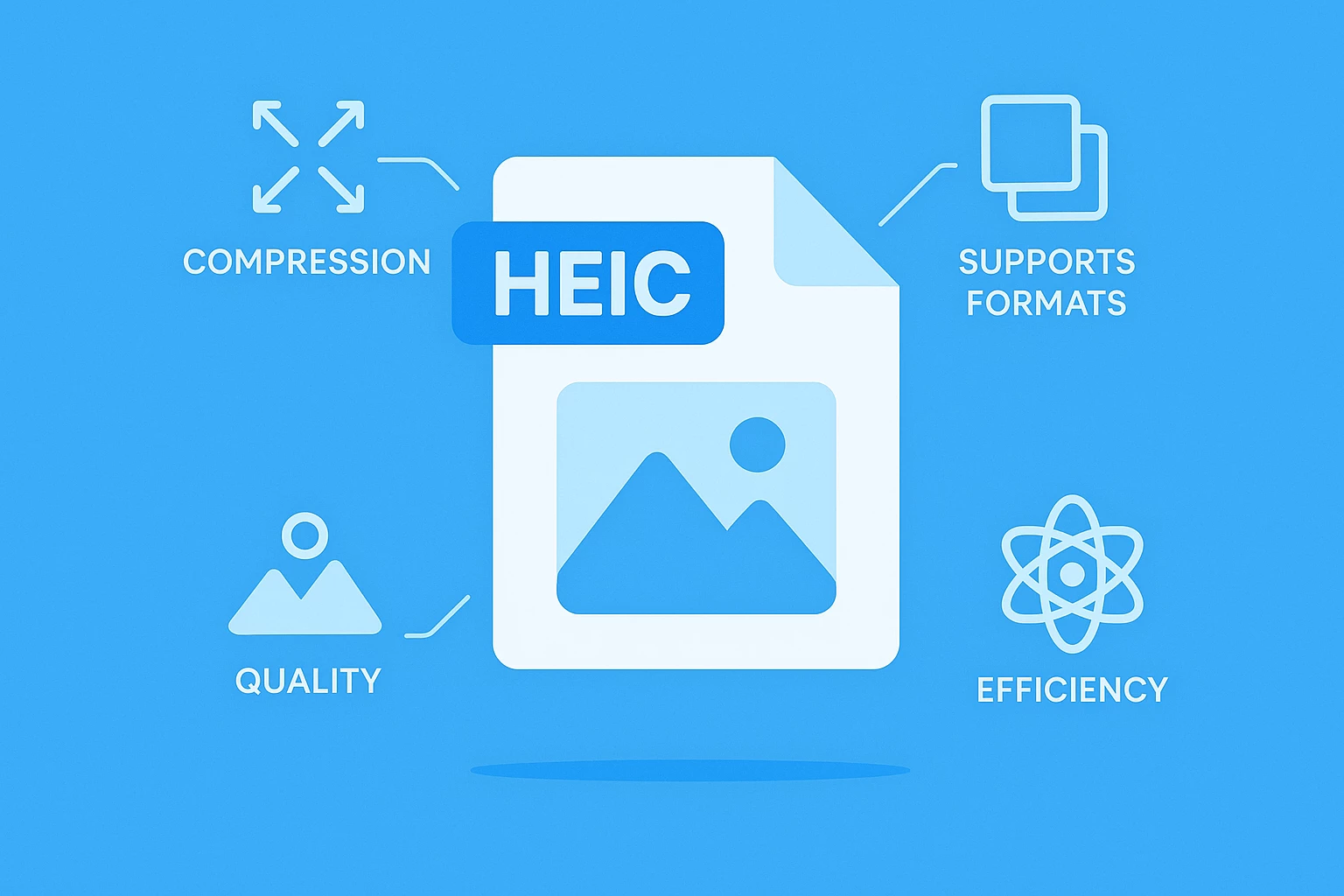
Additionally, transparency is another detail I found useful when moving files into design tools, something JPEG could never handle.
In daily use, the biggest gain is simple. You get more room for photos and videos without constantly running out of storage. HEIC makes it easier to capture memories without worrying about space, and once I got used to it, going back to JPEG felt outdated.
Convert HEIC to SVG with MConverter
Disadvantages and Limitations#
I first ran into trouble with HEIC when I shared photos with a friend on Windows. The files would not open, and I had to find a workaround. I quickly saw the main drawback of HEIC. Moreover, many platforms and tools are still not ready to support it.
Compatibility remains the biggest challenge. Some websites, editing programs, and older devices cannot read HEIC without extra steps. Converting to JPG or PNG often becomes the only solution when you want to share images quickly.
Even with tools that recognize HEIC, features like metadata handling or batch editing often feel unreliable. The experience changes depending on the program, which can be frustrating if you work with large numbers of photos. Another limitation I noticed is the heavy reliance on Apple’s ecosystem.
On an iPhone or Mac, HEIC performs without issues, but outside that environment, it often creates extra steps. Conversions become routine, and sharing turns into a task rather than a quick action.
Over time, these small barriers add weight, especially in projects that involve people using different systems.
Related Article: How to Convert HEIC to JPG with Easy Steps
How to Open a HEIC File#
My first experience with HEIC outside the iPhone ecosystem was confusing. The photo looked sharp and clear on my phone, yet the moment I transferred it to another device, it refused to open.
Then, I explored different methods until I found reliable solutions for every major platform. Each approach taught me more about the strengths and weaknesses of the format.
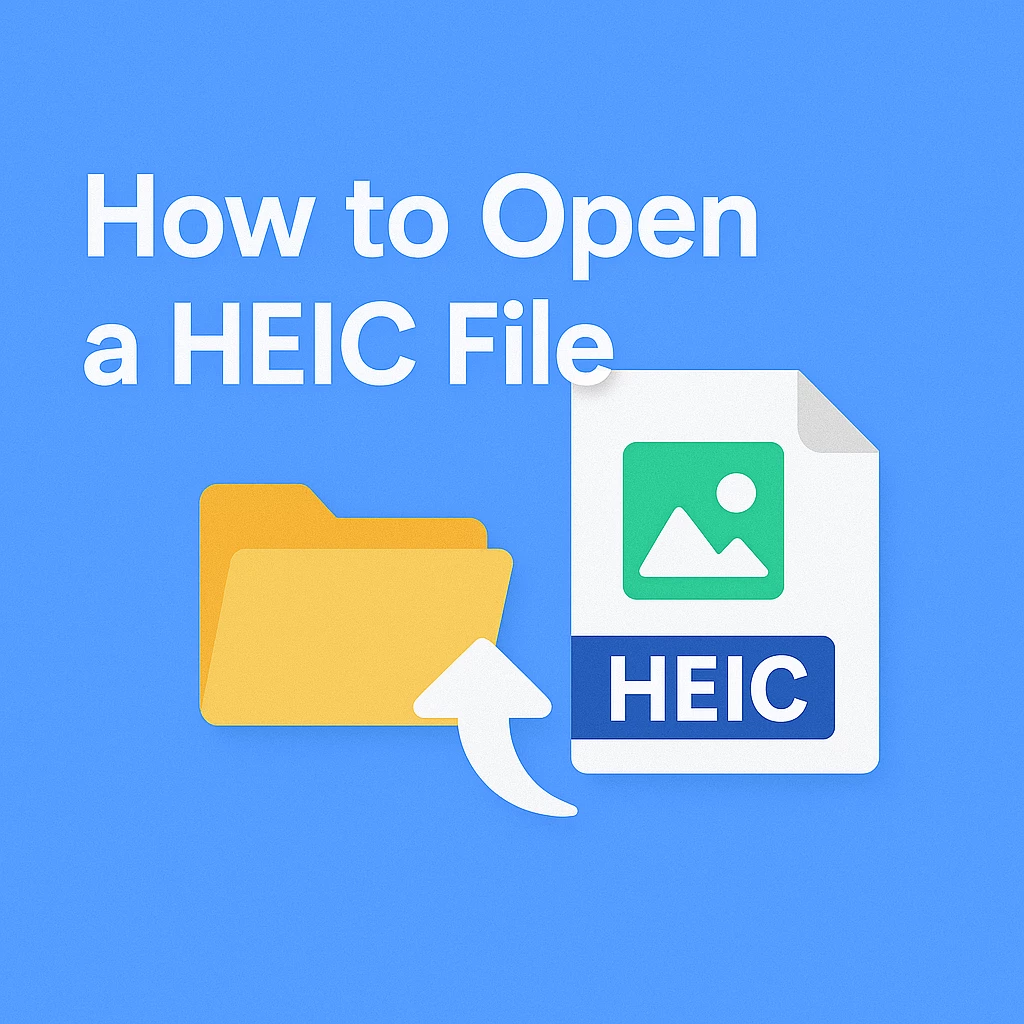
On Windows 10/11#
Windows does not support HEIC right out of the box. My first attempt to open one ended with an error message. I assumed the photo had been damaged during transfer!
Later, I discovered the operating system simply lacked the right tools. Installing the HEIF Image Extensions from the Microsoft Store solved the problem. After that, the Photos app displayed HEIC images without any difficulty.
For videos saved in HEIF or HEVC, I added the HEVC Video Extensions as well. Once both extensions were in place, Windows worked with HEIC files almost as naturally as it worked with JPG.
It felt like a simple adjustment that unlocked the full potential of the format on a non-Apple system.
Convert HEIC to PDF with MConverter
On macOS and iOS#
Apple users face none of these obstacles. Photos saved on my iPhone open instantly in the Photos app, and every AirDrop transfer arrives on my Mac ready to view in Preview.
There are no settings to adjust and no additional software to install. The format feels completely native, almost as if it had been part of the system from the very beginning. Apple designed HEIC to work quietly in the background, so most users never even notice it.
The only time its presence becomes clear is during sharing outside of Apple’s ecosystem, where the seamless experience suddenly stops. Inside the ecosystem, HEIC behaves like the natural standard for photos, supporting features such as Live Photos and burst shots without effort.
On Android#
Using HEIC on Android gave me mixed results. Some newer phones displayed the photos in the gallery immediately. Others refused to recognize the format at all. In those cases, Google Photos became my solution.
Uploading to Google Photos made every HEIC image viewable in seconds, and sharing with others became easy again. Although not as seamless as iOS, the combination of Android and Google Photos worked well enough to keep HEIC practical.
Eventually, it taught me that adoption across the Android market still varies, but reliable options exist for anyone willing to use them.
On Web Browsers#
Opening HEIC in a browser proved unpredictable. Safari displayed the images without effort, while Chrome and Edge often struggled. Some photos appeared perfectly, others refused to load at all.
After running into those issues more than once, I developed a simple habit: convert the files before uploading. Turning HEIC into JPG or PNG ensured every image displayed correctly, no matter which browser I used.
Furthermore, the extra step added a little confusion, but it removed uncertainty and gave me confidence that my photos would appear the same across all platforms.
Convert HEIC to WEBP with MConverter
How to Convert HEIC to JPG or PNG#
At some point, every HEIC user needs a quick conversion. I reached that stage while uploading photos to a platform that only accepted JPGs. My images refused to go through, and I had to find a reliable fix. After testing different methods, one tool stood out above the rest.
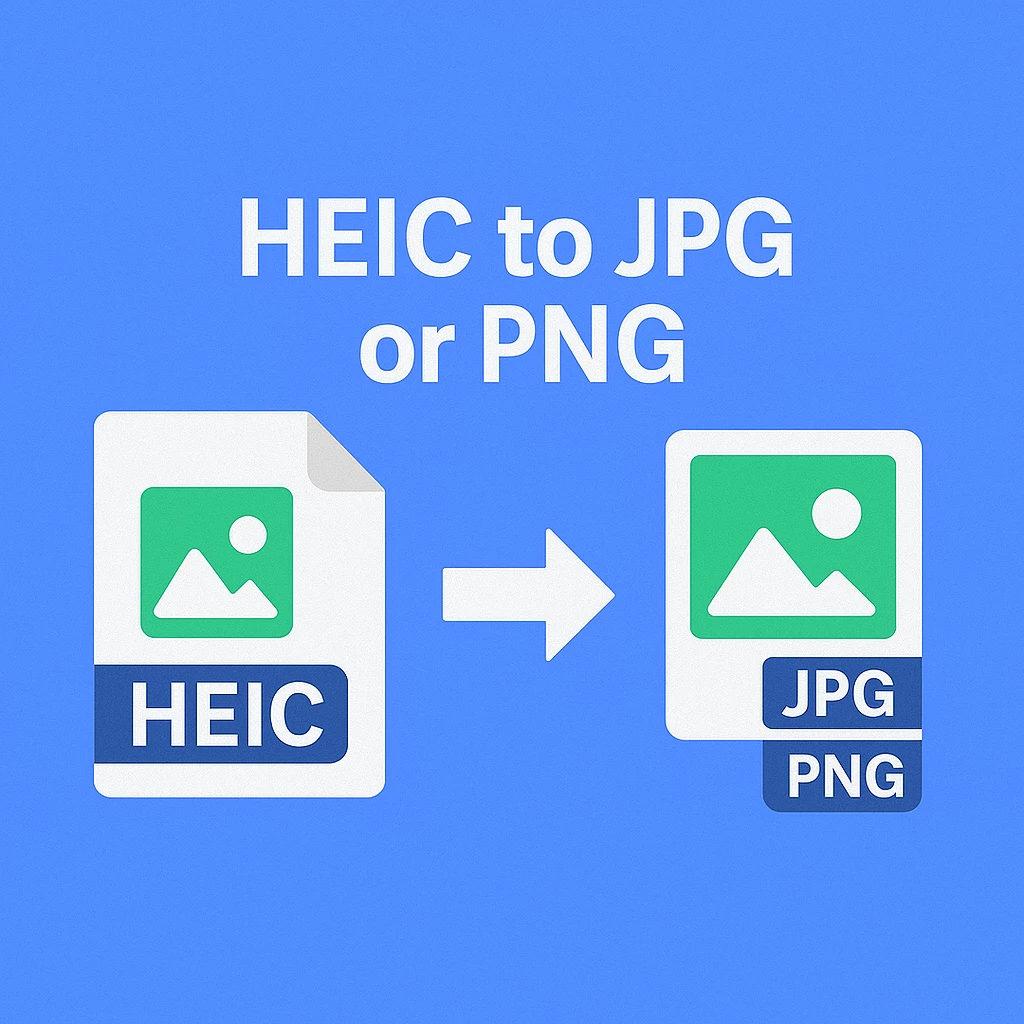
Built-in Apple Settings: On iPhone, the fastest way is to switch the camera settings. By changing the format from “High Efficiency” to “Most Compatible,” new photos save as JPG.
The Photos app also allows exporting to JPG or PNG with just a few taps. These solutions work well, but they do not help with older images already saved in HEIC.
Desktop Tools and Cloud Services: Desktop converters provide batch processing and offline privacy. I used them a few times, though downloading software for a simple task felt unnecessary.
Cloud services such as Google Photos also handle HEIC, but every upload passes through third-party servers, which makes me cautious about using them for personal images.
MConverter: The Most Reliable Option: After you try several online tools, MConverter will become the one you trust most. Our platform converts HEIC to JPG or PNG within seconds and supports batch uploads, which saves a lot of time.

Every file is transferred over an encrypted connection and deleted automatically after processing. Nothing stays on the server longer than necessary, which gives peace of mind when dealing with personal or professional photos.
The real strength of MConverter is its flexibility. Converting HEIC to JPG or PNG is just the beginning. The platform supports a wide range of additional formats, including GIF, BMP, AVIF, ICO, PDF, and many more.
Having so many options in one place means you no longer need to rely on multiple tools for different situations.

Our software covers almost every conversion scenario you may face. From everyday tasks like sharing iPhone photos to more advanced needs in design, printing, or documentation, MConverter provides a single, secure solution that saves both time and effort.
Convert HEIC to GIF with MConverter
Security and Privacy of HEIC Files#
My first questions about HEIC were not only about storage or compatibility but also about privacy. I wanted to know if using a new format changed the level of protection for personal photos. Over time, I learned that the file type itself is safe. The risks usually appear during transfer or conversion.
On Apple devices, HEIC photos remain as secure as JPG or PNG. They are encrypted during iCloud backups and protected by the security layers built into iOS and macOS. Storing them locally on an iPhone or Mac does not create new risks compared to older formats.
Concerns grow once photos leave Apple’s ecosystem. Uploading HEIC images to unverified services can expose hidden details such as location data, device information, and timestamps. I have seen how careless sharing leaves this kind of metadata untouched, making it easy to misuse.
In short, HEIC does not weaken security. The format is as safe as any other image type. Privacy depends on how photos are managed. With proper handling and a trusted converter, HEIC can be used with full confidence in both personal and professional settings.
Final Thoughts#
HEIC has proven itself as a modern image format that saves storage space while preserving quality. Apple’s choice to make it the default has highlighted its advantages, from 16-bit color to support for Live Photos and burst shots.
Anyway, the only real drawback comes from uneven compatibility, which often forces users to convert files into more common formats.
For those moments, MConverter offers a straightforward and secure solution. If you have a reliable tool, HEIC can be enjoyed for its efficiency without causing frustration during sharing or editing.
What Devices Support HEIC in 2025?#
Most modern devices handle HEIC without issues. iPhones from iPhone 7 onward and all recent iPads save and open HEIC by default. Macs running macOS High Sierra or newer support the format as well.
On the Android side, phones with Android 10 or later usually open HEIC, though support depends on the model. Windows 11 can view HEIC out of the box, while Windows 10 users need to install the free HEIF Image Extensions from the Microsoft Store. Safari displays HEIC natively, while other browsers may still require conversion.
Can I Set My iPhone to Always Save Photos as JPG Instead of HEIC?#
Yes. Go to Settings > Camera > Formats and select Most Compatible. New photos will then save as JPG instead of HEIC.
Is HEIC Better Than JPEG for Printing Photos?#
Not really. HEIC is excellent for saving space and keeping quality on digital devices, but many printers and print services still prefer JPG. Converting photos to JPG before printing ensures full compatibility and avoids any unexpected issues with color or format.
Do HEIC Files Lose Quality When Converted to JPG?#
Yes, some quality is lost during conversion because JPG uses lossy compression. Fine details or color depth may be reduced in the process, although in most everyday photos, the difference is very small and hardly noticeable to the eye.
Which Browsers Support HEIC Files Now?#
At the moment, Safari on macOS and iOS is the only major browser that consistently supports HEIC. Chrome, Firefox, Edge, and Opera do not display HEIC images natively and usually require conversion before use.
Is HEIC Safer to Use Than JPEG?#
Both formats are equally safe on their own. Security depends on how files are stored, shared, and converted. The difference comes from the tools used.
Relying on trusted converters and secure transfers provides more protection than the choice between HEIC and JPEG.
What’s the Difference Between HEIC and HEVC?#
HEIC is an image format, while HEVC is a video compression standard. HEIC stores photos and often relies on HEVC technology to compress them efficiently.
The two work together, but they are not the same. HEIC is designed for still images, and HEVC is built for video.
Will HEIC Eventually Replace JPEG Completely?#
A complete replacement is unlikely. HEIC gives better efficiency and quality, but JPEG still dominates for compatibility with printers, websites, and older devices.
Both formats will remain in use, with HEIC growing in newer devices and JPEG staying essential for universal access.
About the author
Mihael joined MConverter as a co-founder in 2023, bringing a vision to transform a tech tool into a product company built around meaningful user experience. With roots in B2B sales, product development, and marketing, he thrives on connecting the dots between business strategy and customer needs. At MConverter, he shapes the bigger picture - building the brand, inspiring teams, and pushing innovation forward with a can-do mindset. For Mihael, it’s not just about file conversions, but about creating experiences that deliver real impact.
Check out more articles
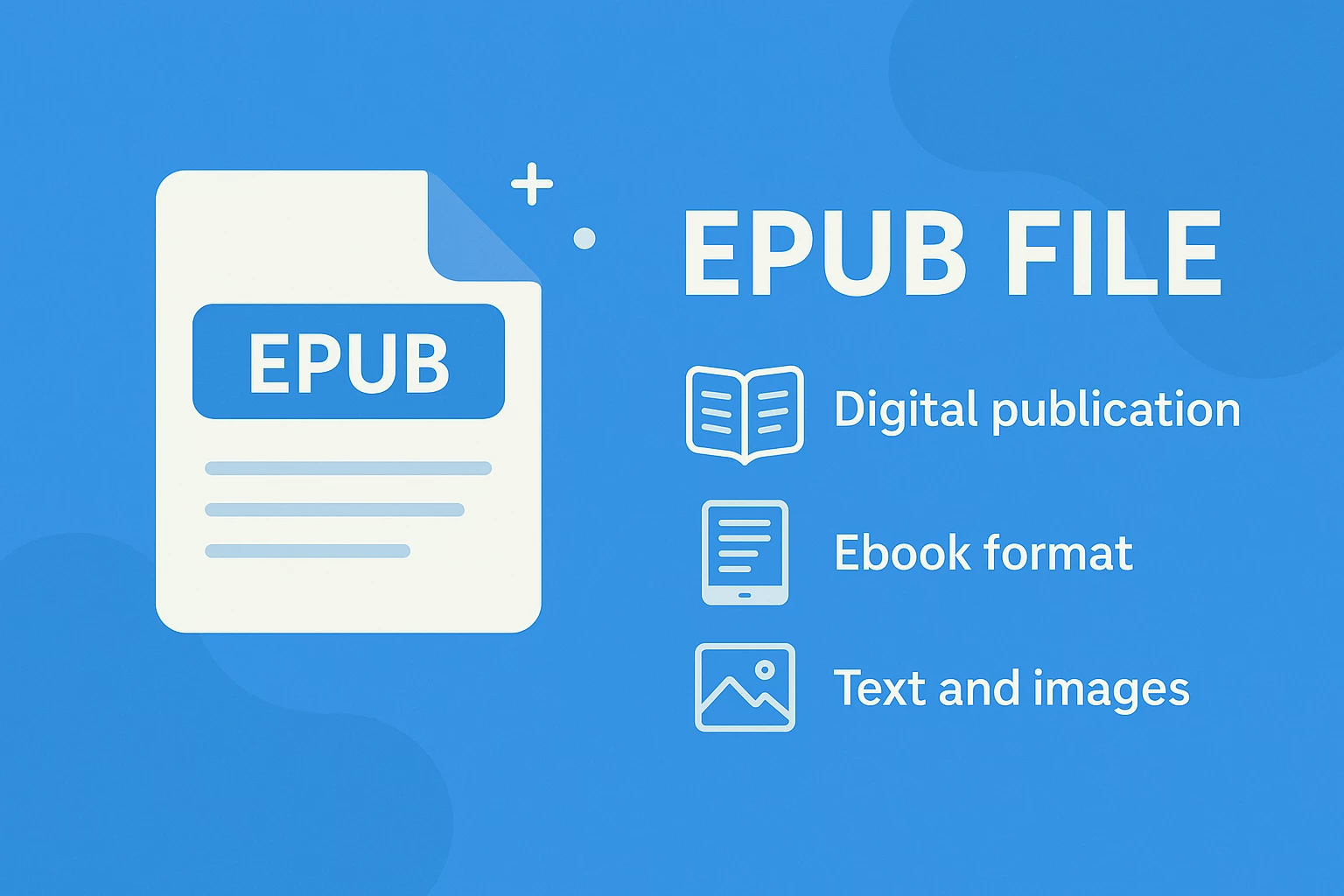
EPUB Files - What They Are & How to Open Them

What Is an ISO File? The Ultimate Guide for 2025
